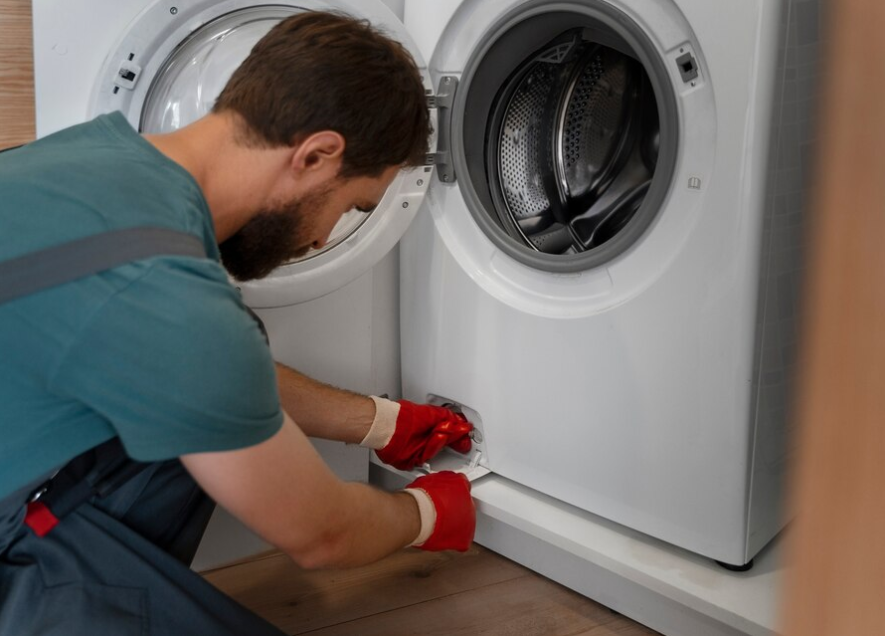A malfunctioning dryer can be more than just an inconvenience—it can disrupt your entire laundry routine. Fortunately, many common dryer issues can be resolved with a bit of troubleshooting and DIY repair. Understanding these common problems and knowing how to tackle them can save you time and money. Here’s a guide to help you diagnose and address frequent dryer issues, with tips on when to seek professional dryer appliance repair.
1. Dryer Won’t Start
If your dryer won’t start, the problem might be as simple as a tripped circuit breaker or a loose power cord. Before diving into complex repairs, check the following:
- Power Supply: Ensure the dryer is plugged in and the power cord is secure. Verify that the circuit breaker hasn’t tripped or the fuse hasn’t blown.
- Door Switch: The dryer door must be fully closed for the appliance to start. If the door switch is faulty, the dryer may not operate. You can test the door switch with a multimeter to check for continuity.
- Start Switch: Sometimes, the start switch itself can fail. If you suspect this is the case, consult your dryer’s manual for instructions on testing and replacing the switch.
2. Dryer Drum Not Spinning
A drum that fails to spin can be a sign of several issues, from a broken belt to a malfunctioning motor. Here’s how to troubleshoot:
- Drive Belt: The drive belt is responsible for turning the drum. If it’s broken or worn out, you’ll need to replace it. To check, unplug the dryer and remove the front or rear panel to inspect the belt. If it’s damaged, purchase a new one and follow the manual for replacement instructions.
- Drum Rollers or Bearings: Drum rollers or bearings that are worn out can prevent the drum from spinning. Check these components for wear and replace them if necessary.
- Motor: If the belt and rollers are in good condition, the problem might be with the motor. Motors can be complex to replace, so if you suspect this issue, you might need professional dryer appliance repair.
3. Dryer Taking Too Long to Dry
If your dryer takes longer than usual to dry clothes, it could be due to several factors:
- Lint Filter: A clogged lint filter can restrict airflow, leading to longer drying times. Make sure to clean the filter before each load to ensure optimal performance.
- Ventilation System: The dryer’s venting system should be free of obstructions. Check the vent hose for kinks and the duct for lint buildup. A clean vent ensures proper airflow and efficient drying.
- Heating Element: If the dryer is blowing cool air, the heating element might be malfunctioning. Test the heating element with a multimeter to ensure it’s working correctly and replace it if needed.
4. No Heat or Insufficient Heat
A dryer that produces no heat or insufficient heat can be frustrating. Here’s how to address this issue:
- Thermostats: Dryers have several thermostats that regulate temperature. If one fails, the dryer may not heat properly. Use a multimeter to test the thermostats for continuity and replace any faulty ones.
- Heating Element: If the heating element is defective, the dryer will not produce heat. Test the element with a multimeter and replace it if necessary.
- Thermal Fuse: The thermal fuse protects the dryer from overheating. If it’s blown, the dryer may not heat. Check the fuse with a multimeter and replace it if it’s faulty.
5. Excessive Noise
A noisy dryer can be annoying and a sign of underlying issues:
- Drum Support Rollers: Worn-out drum support rollers can create loud noises. Inspect them for wear and replace them if they are no longer functioning properly.
- Belt Tension Pulley: If the tension pulley is damaged, it can cause a squealing noise. Check the pulley and replace it if necessary.
- Foreign Objects: Occasionally, small items like coins or buttons can get caught in the dryer drum or blower. Inspect and remove any foreign objects to eliminate the noise.
6. Dryer Is Vibrating or Shaking
If your dryer is vibrating or shaking excessively, it might be due to improper leveling or internal issues:
- Leveling: Ensure the dryer is level by adjusting its feet. An unbalanced dryer can cause excessive vibrations.
- Internal Components: Loose or damaged internal components can also cause shaking. Check for any loose screws or parts and tighten or replace them as needed.
When to Seek Professional Dryer Appliance Repair
While many dryer issues can be addressed with DIY repairs, some problems may require professional help. If you’ve tried the above troubleshooting tips and the dryer still doesn’t function properly, or if you encounter issues with complex components like the motor, it’s best to consult a professional. A certified technician can provide a thorough diagnosis and repair, ensuring your dryer operates safely and efficiently.
By following these troubleshooting tips and performing basic repairs, you can extend the life of your dryer and keep it running smoothly. Regular maintenance, such as cleaning the lint filter and checking the ventilation system, can also help prevent common problems and improve your dryer’s performance.

